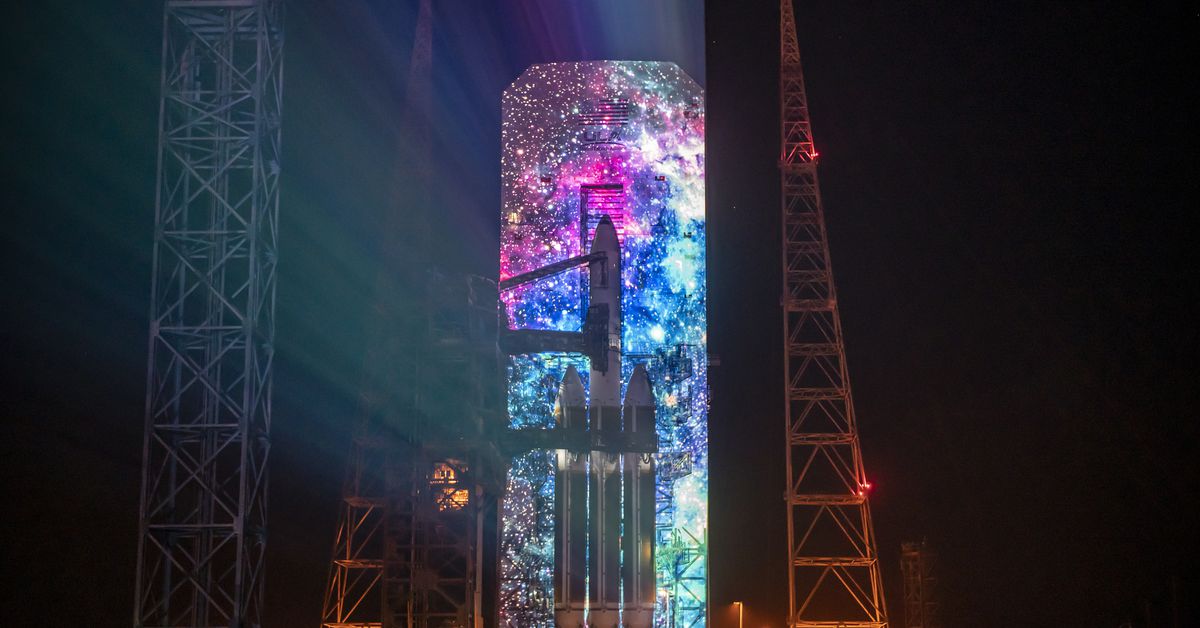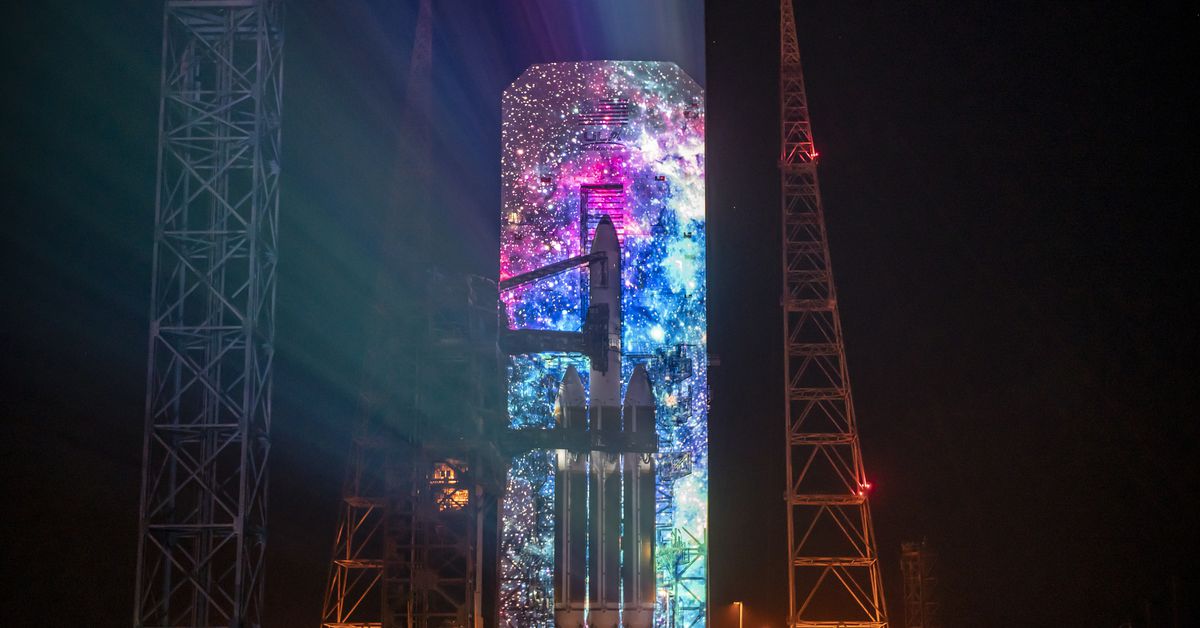
Update August 29th, 8:15AM ET: At just 3 seconds to liftoff, the Delta IV Heavy aborted the launch, just after the engines initially ignited and then shut off quickly. ULA says “an unexpected condition” prompted the abort. ULA’s CEO, Tory Bruno, noted the vehicle is in good shape, but the company will take at least a week to review all the data and try again.
Original Story: In the very early morning hours on Saturday, the United Launch Alliance is set to launch its most powerful rocket from Cape Canaveral, Florida, lofting a classified spy satellite for the National Reconnaissance Office. The mission could be the first of three back-to-back launches out of the Cape, too, with SpaceX set to launch two missions shortly afterward.
Such a cluster of missions is a rare event for the Florida spaceport. “It could be a historic event for us this week — lots of things going on,” Brig. Gen. Douglas Schiess, commander, of the 45th Space Wing that oversees launches out of the Cape, said during a press call.
The rocket going up on ULA’s mission is the Delta IV Heavy, a giant vehicle that consists of three rocket cores strapped together to provide extra thrust. It’s one of the most powerful rockets in the world, though shy of the power packed into SpaceX’s Falcon Heavy. ULA doesn’t fly the Delta IV Heavy very often, as it’s an expensive vehicle to make, but the company uses the rocket for large, heavy satellites in need of going to super high orbits.
The rocket’s payload is NROL-44, and like all NRO missions, its purpose is cloaked in secrecy. The office simply notes that “NROL-44 supports NRO’s overall national security mission to provide intelligence data to the United States’ senior policymakers, the Intelligence Community and Department of Defense.” ULA has already launched 29 missions for the NRO, many of which have required the Delta IV Heavy.
“It could be a historic event for us this week.”
Once the Delta IV Heavy launches, SpaceX will be on deck. The company is slated to launch a satellite for Argentina’s space agency, sending the payload into an orbit over the poles. It’ll mark the first time in more than 50 years that a rocket launches into this kind of polar orbit from the Florida coast. After that flight, SpaceX will then launch its next batch of internet-beaming Starlink satellites. Originally, SpaceX had hoped to launch these two missions on consecutive days following ULA’s mission, which would have meant three launches in three to four days for Florida. However, ULA was forced to delay its original launch attempt on Thursday due to an issue with a heater on the launchpad, causing SpaceX to reschedule its missions for different days.
Despite the delays, the 45th Space Wing will still have plenty of work to do in a short period. Three separate teams have been assembled to handle each launch — that way, there’s no overlap between the groups. The setup was designed as a precaution, to prevent unneeded exposure during the coronavirus pandemic. The 45th has also been taking extra precautions to oversee launches since March. “We take temperatures as we go into our operations centers; we wear face coverings; we have hand sanitizer sizer; we make sure that we’re washing our hands on a regular basis,” Schiess said.
The Delta IV Heavy is scheduled to lift off on Saturday at 2:04AM ET out of ULA’s launch site at Cape Canaveral Air Force Station. So far, weather is looking good, with an 80 percent chance that conditions will be favorable for launch, according to the 45th Space Wing. ULA’s webcast will begin at 1:52AM ET, for anyone who is still awake and hoping to catch an early morning launch.
Update August 27th, 2:30PM ET: ULA delayed the launch early Thursday morning due to a heater having issues on the launchpad. The company will try to launch again on Saturday morning, August 29th. This story was updated to reflect the changes.
